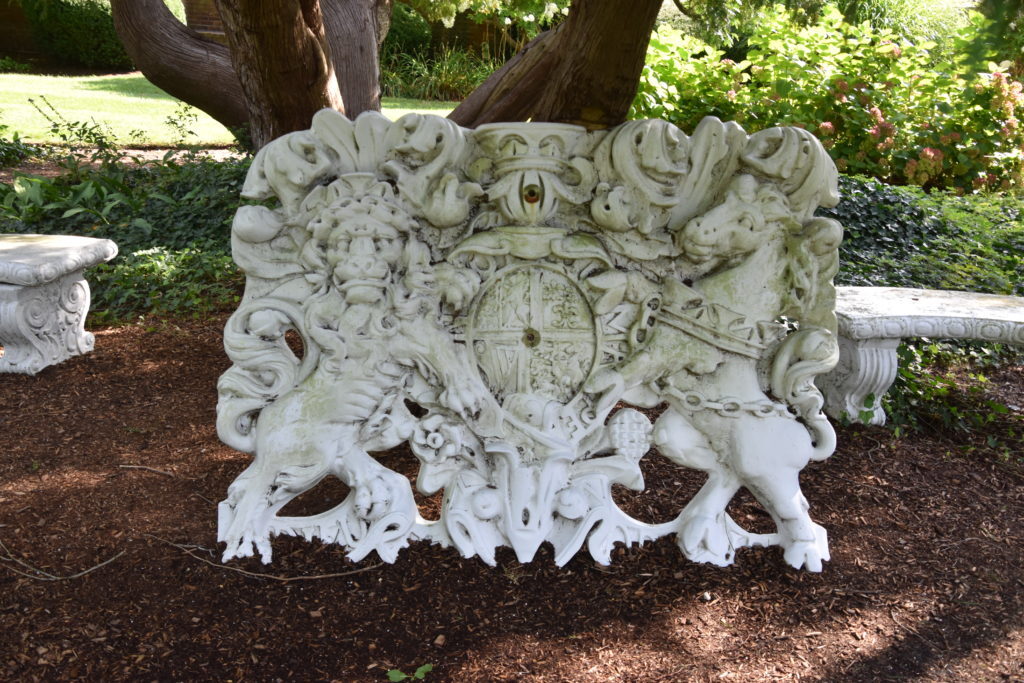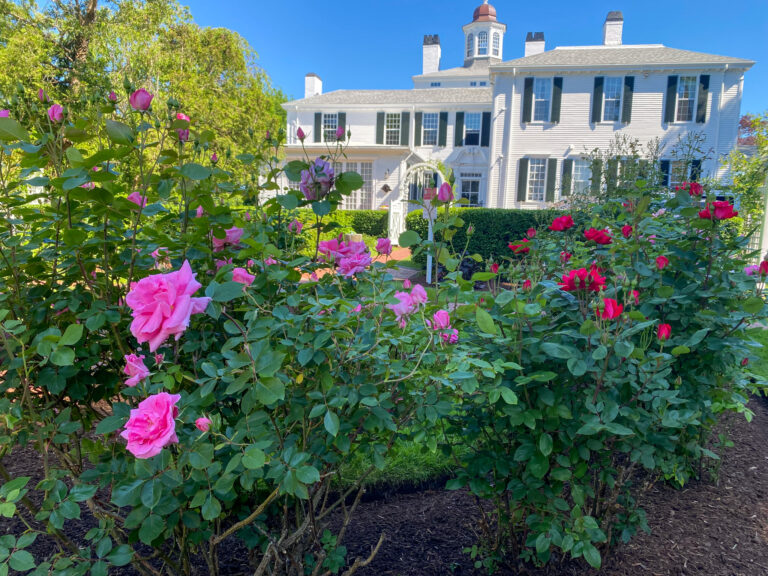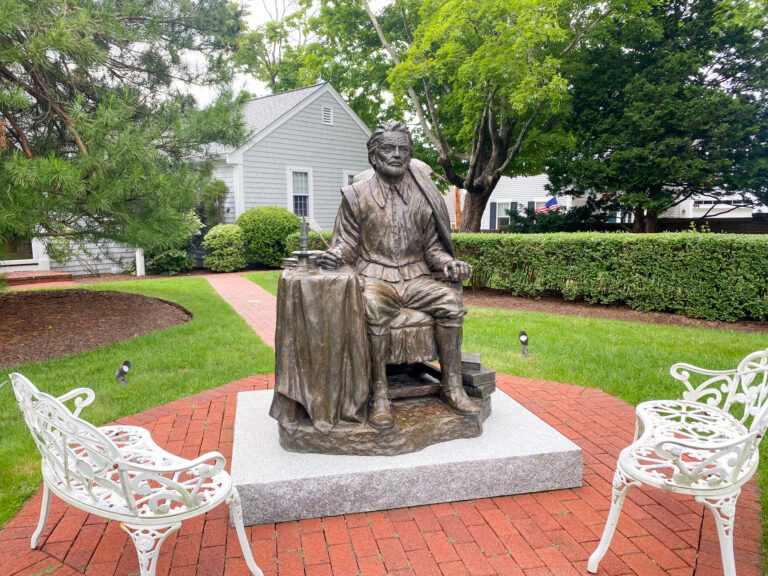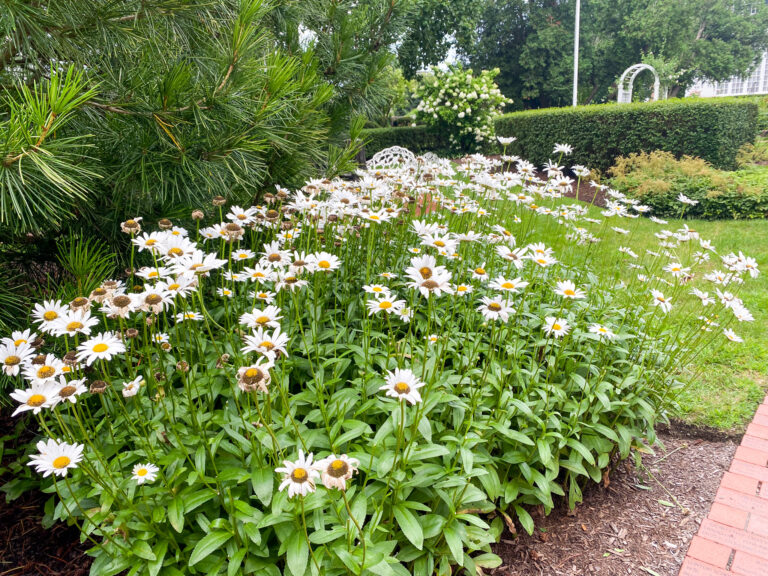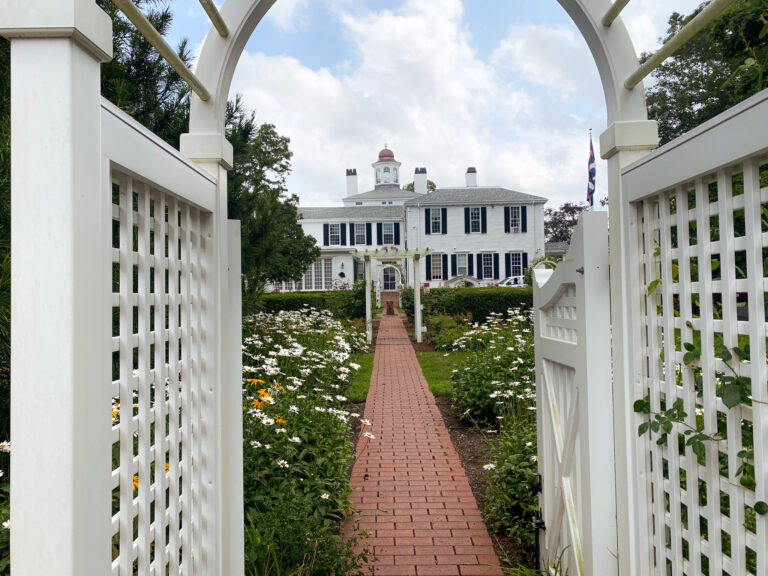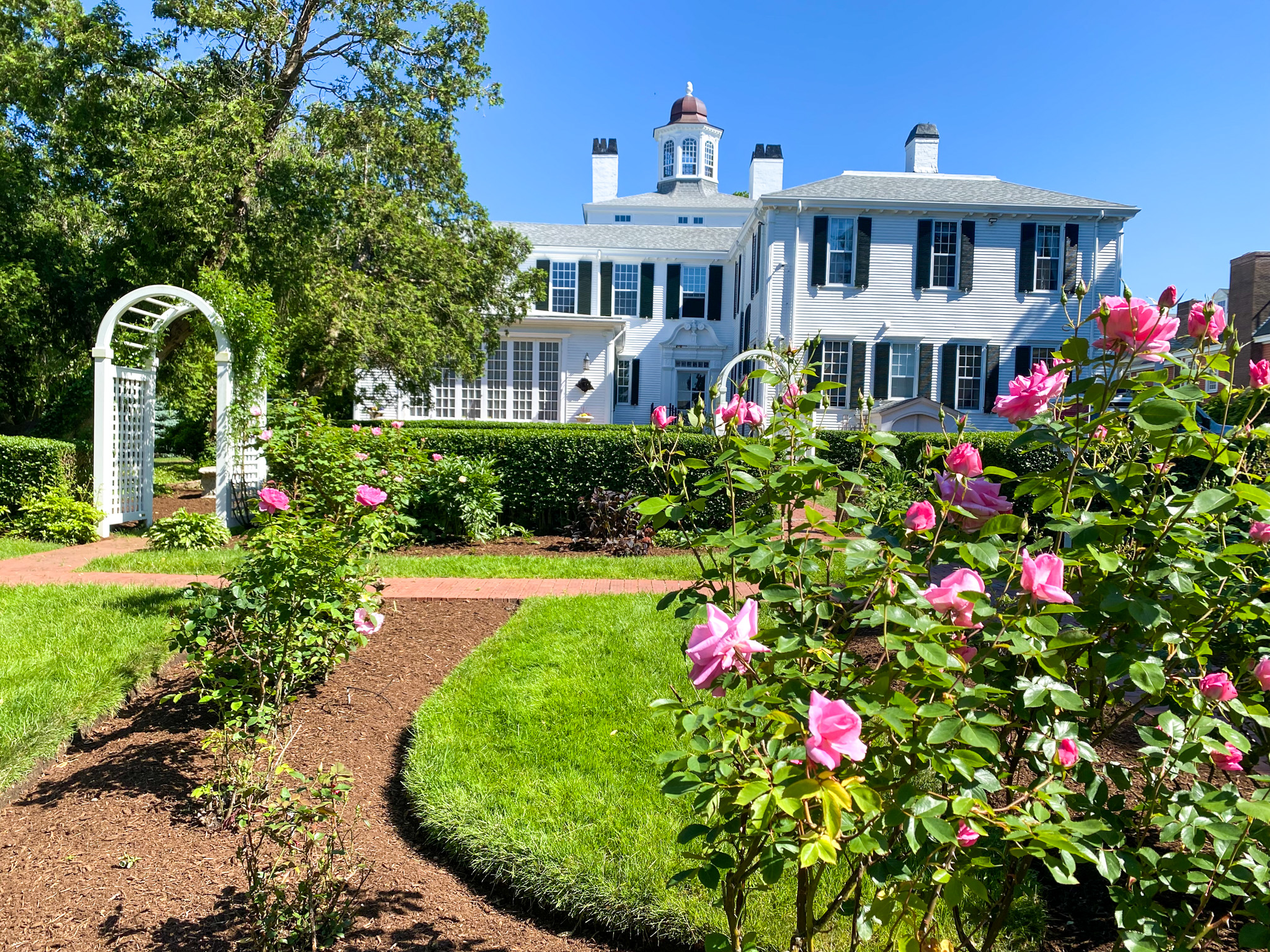
The Gardens
The Mayflower Society’s Colonial Revival Garden is intended to evoke the garden design of colonial America. Note the central path, straight lines and symmetrical rectangular beds. Colonial Revival Gardens were widely popular from the late 1800s to the late 1930s.
In the 1920s, additions were made to the already extensive garden, and the red brick wall which still borders the south and east sides of the property was erected.
Colonial Revival Gardens do not seek to imitate or replicate actual colonial gardens or colonial planting schemes. Rather, they are (as historical gardening expert Denise Wiles Adams notes) “romanticized” versions of colonial gardens.
Colonial Revival gardens also usually incorporate a “feature” like an arbor, bench, or fountain at the center of the garden where the paths intersect. Such features were elements of the late colonial period only.
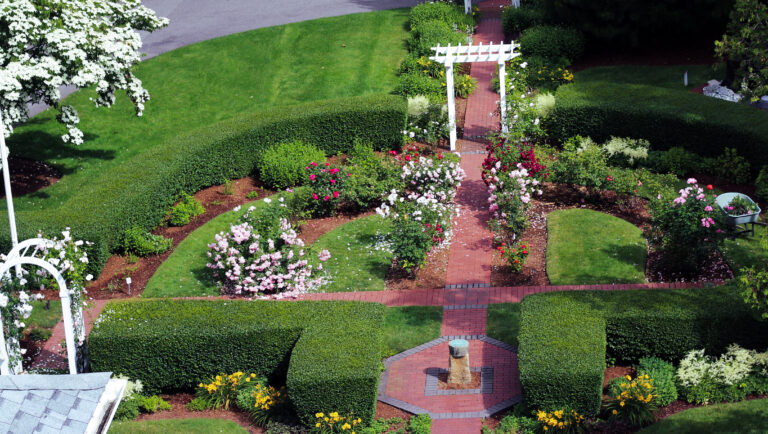
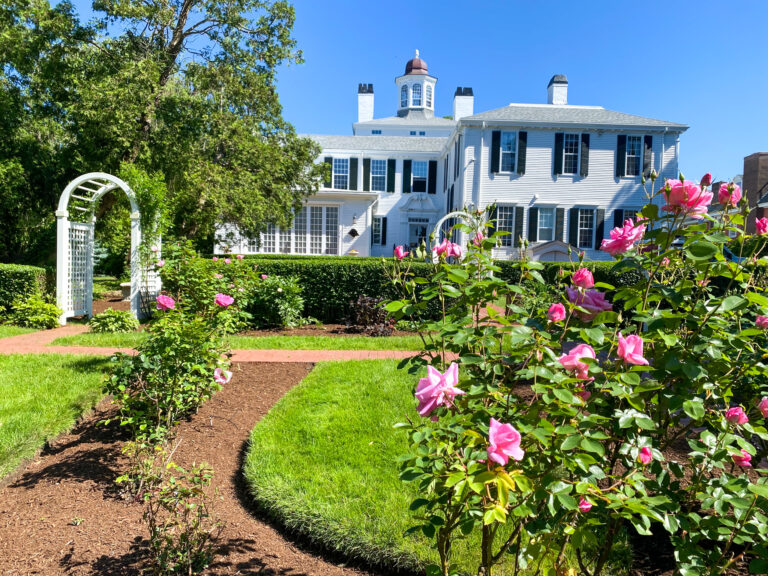
Our Colonial Revival Garden was installed around the turn of the 20th century, as part of an extensive renovation of the Mayflower Society House (then called the Winslow House).
The owner of the property at that time, Charles Willoughby, hired famed architect Joseph Everett Chandler to oversee the renovations. Chandler was an authority on the restoration of old New England houses and author of several books on the subject. He is best known for his work on the House of the Seven Gables in Salem, the Paul Revere House in Boston and the Old South Meeting House in Boston.
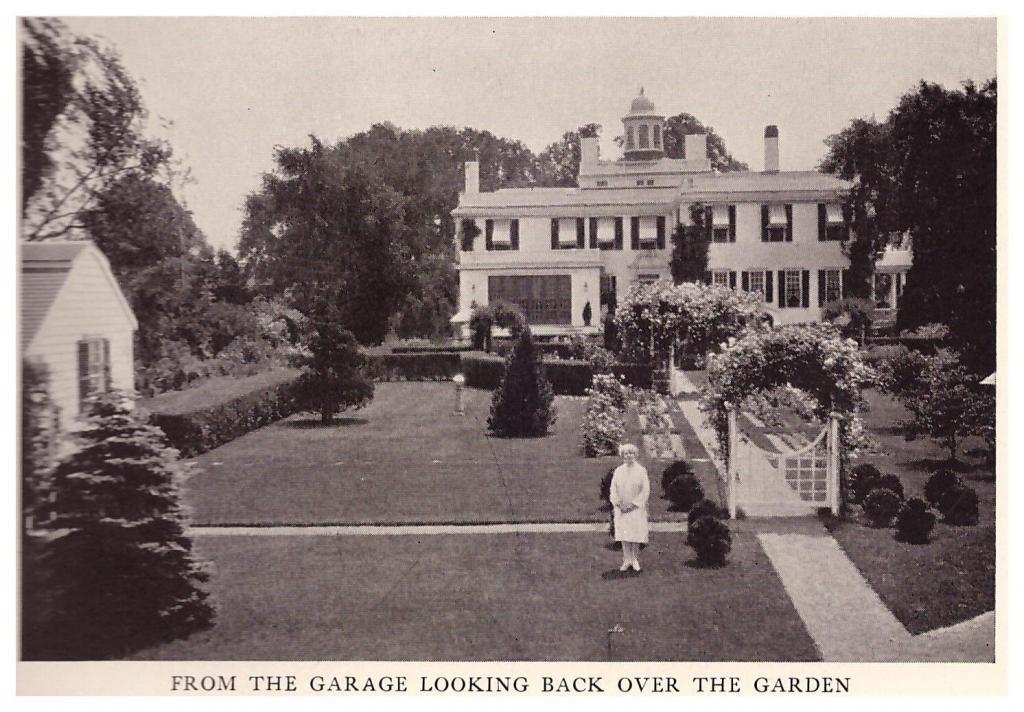
The Mayflower Society established the Garden Walkway Fundraising Project in 2011. This project is a wonderful way to leave a lasting memory of your family in Plymouth where the Mayflower Pilgrim ancestors established Plymouth Colony, resulting in bringing self-governance to this country. Your commemorative brick will grace our walkway in the heart of America’s Hometown for years to come.
Today there have been over 600 bricks donated, engraved, and installed in the Garden Walkway.
We encourage members and friends to place a brick in the walkway to celebrate, honor or remember their families.
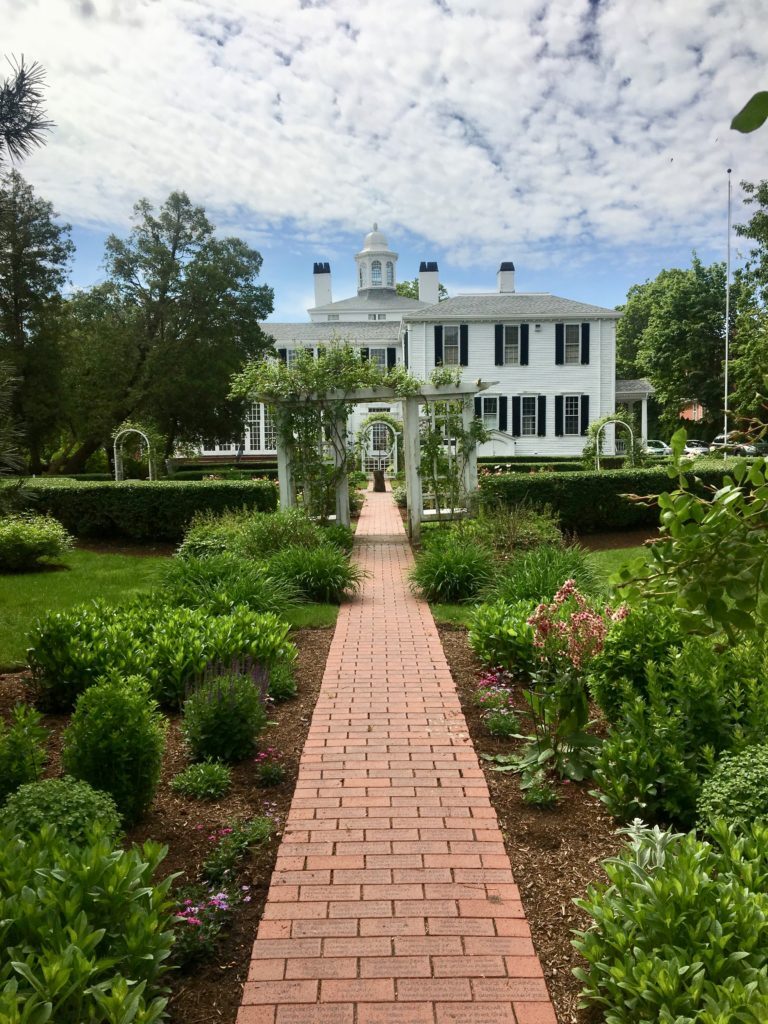
A concrete replica of the coat of arms of Great Britain for 1714 to 1801 was installed by Charles Willoughby as part of the balustrade on the roof in honor of loyalist Edward Winslow. The balustrade was removed in 2017 and the replica was moved to the garden.
